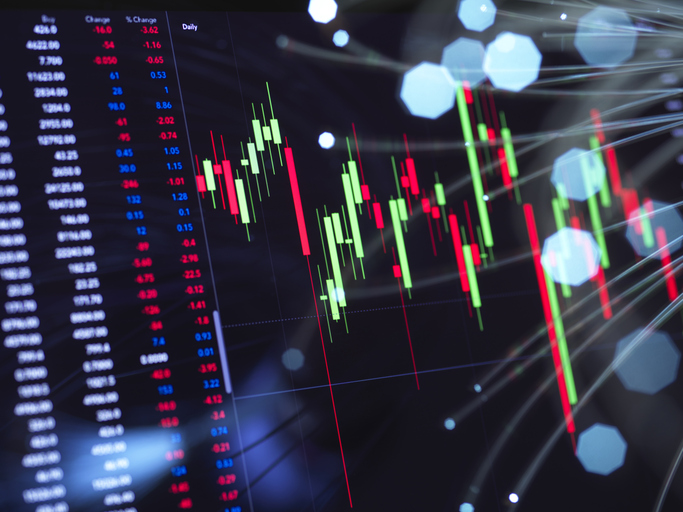Best SPDR ETFs to Buy and Hold
These six SPDR ETFs give investors options to build solid, low-cost portfolios for the long term.


State Street's job as an investment manager is to get you from point A to point B with as little pain as possible and, hopefully, with plenty of assets in your retirement portfolio.
And, to its credit, many of its best SPDR ETFs do precisely that.
State Street now boasts more than 170 ETFs under the SPDR nameplate. The most famous — not to mention the largest SPDR — is the S&P 500 ETF Trust (SPY) with net assets of $676.9 billion.
SPY launched the ETF era more than 30 years ago, and investors are better for it.
Are SPDR ETFs a good investment?
For investors wondering where to invest, State Street's SPDR ETFs offer a broad range of options that allow them to build a core portfolio while taking occasional shots to capture some of the benefits of higher-growth sectors.
Depending on your personal needs, you might load up on certain funds while ignoring others. But this list of the best ETFs offers options for just about every core portfolio objective.
For investors focused on the long term vs the day-to-day of the market, here are six of the best SPDR ETFs to buy and hold for at least the next few years.
Data is as of October 9. Dividend yields represent the trailing 12-month yield, which is a standard measure for equity funds.

Financial Select Sector SPDR ETF
- Assets under management: $53.8 billion
- Dividend yield: 1.4%
- Expenses: 0.08%, or $8 annually for every $10,000 invested
The Financial Select Sector SPDR ETF (XLF) is one of the most widely watched sector funds on this list of SPDR ETFs. XLF tracks the performance of the Financial Select Sector Index, a collection of financial stocks within the S&P 500 Index.
XLF struggled as rising interest rates caused problems for regional bank stocks early in 2023. But shares stabilized and began to rebound in October of that year, setting the stage for XLF to rise 30.6% in 2024.
And XLF is up more than 12% so far in 2025.
The ETF has been stellar for shareholders over the long haul, too: The Financial Select Sector SPDR ETF has generated a total return (price change plus dividends) of 244.7% over the last 10 years.
This SPDR fund has 80 holdings with a weighted average market cap of $224.1 billion. The ETF's top 10 positions account for 55% of its $53.8 billion in total assets. Warren Buffett's holding company Berkshire Hathaway (BRK.B) and Jamie Dimon's big bank JPMorgan Chase (JPM) are the only stocks with weightings above 10%, at 11.9% and 11.0%, respectively.
The top three industries by weight in XLF are financial services (30.2%), banks (25.7%) and capital markets (25.7%), followed by insurance (14%) and consumer finance (4.4%).
Regarding growth and valuation, XLF's estimated earnings per share over the next three to five years is 11.7%. The average holding has a price-to-book (P/B) ratio of 2.3 and a price-to-earnings (P/E) ratio of 16.5.
Investing in XLF offers investors a chance to participate in the growth of one of the best SPDR ETFs at a reasonable price.

SPDR S&P 1500 Value Tilt ETF
- Assets under management: $535.4 million
- Dividend yield: 1.9%
- Expenses: 0.12%
The SPDR S&P 1500 Value Tilt ETF (VLU) makes an excellent option for investors wanting broader exposure to value stocks. VLU tracks the performance of the S&P 1500 Low Valuation Tilt Index, which takes the S&P Composite 1500 Index and applies a value tilt.
So companies with low P/E, P/B, price-to-sales (P/S) and price-to-cash flow (P/CF) ratios and those that pay dividends are given a composite value based on the last five years of data.
The fund then divides the 1,500 names into 20 sub-portfolios based on relatively equal market caps. The individual stocks in those sub-portfolios are then weighted based on their composite valuation. The index is rebalanced annually on the third Friday in April.
The value ETF holds 1,479 names in its portfolio. The fund's weighted average market cap is $524.6 billion, making it a decidedly large-cap investment. The top 10 holdings account for 18.7% of the portfolio.
Blue chip stocks Amazon.com (AMZN), Microsoft (MSFT) and Berkshire Hathaway are the three largest holdings currently in SPDR S&P 1500 Value Tilt ETF, with weights of 3.27%, 2.08% and 2.02%, respectively.
If you're interested in a diversified portfolio of stocks with a value tilt, VLU is tops among the best SPDR ETFs.

SPDR Portfolio Developed World ex-US ETF
- Assets under management: $30.7 billion
- Dividend yield: 2.6%
- Expenses: 0.03%
Most core ETF portfolios should consider a global fund that excludes U.S. stocks to avoid home-country bias, the conscious or unconscious act of sticking to one's own country when selecting investments.
"Just like sports teams recruit the best players, the goal of investing should be to win by using diverse talent. You may not find what you need at home, and to be competitive you need to look across borders," Chicago-based financial services firm Northern Trust stated in a 2022 report on home-country bias.
According to the authors of that report, "Diversification is the one 'free lunch' in investing. Adding foreign equity investments to a domestic portfolio helps produce more diversified portfolios and alleviates concentration risks related to investing domestically only."
The SPDR Portfolio Developed World ex-US ETF (SPDW) is one of the best SPDR ETFs for this diversification. The ETF tracks the performance of the S&P Developed Ex-U.S. BMI (broad market index) Index . This float-adjusted, cap-weighted index represents a collection of publicly traded companies based in developed countries other than the U.S. The index is a subset of the S&P Global BMI.
Stocks included in the index must have a float-adjusted market cap of at least $100 million and sufficient six- and 12-month daily volume. Once included in the index, a stock's float-adjusted market cap can drop as low as $75 million.
There are currently companies from 24 countries and Hong Kong represented in the fund. The top three countries by weight are Japan (21.9%), the United Kingdom (11.8%) and Canada (10.7%).
SPDW has 2,413 holdings with a weighted average market cap of $87.0 billion. The three top sectors by weight are financials (23.1%), industrials (19.1%) and technology (10.4%).
Not only is it diversified among countries and sectors, but it's also diversified among companies. The top 10 holdings account for less than 10% of the ETF's $30.7 billion net assets.
It charges just 0.03%, a very inexpensive way to avoid home-country bias.

SPDR S&P Kensho New Economies Composite ETF
- Assets under management: $2.6 billion
- Dividend yield: 0.9%
- Expenses: 0.20%
The SPDR S&P Kensho New Economies Composite ETF (KOMP) is one of six thematic ETFs from S&P Kensho. It seeks to expose investors to innovation trends such as alternative finance, smart borders, cybersecurity and many more.
Kensho got its start in 2013. It uses artificial intelligence (AI), machine learning (ML), speech recognition and other innovative technology to drive fact-based decision-making. S&P Global acquired the company for $550 million in 2018.
The fund tracks the performance of the S&P Kensho New Economies Composite Index, a collection of U.S.-listed companies based in developed and emerging markets that are driving innovation. The index is rebalanced semiannually on the third Friday in June and December.
"KOMP utilizes natural language processing to scan regulatory filings and identify innovative companies related to more than 20 innovation areas. KOMP's approach not only identifies leading companies in each innovation area, but also seeks to capture the entire ecosystems supporting them," the fund's fact sheet states.
The SPDR S&P Kensho New Economies Composite ETF currently has about 450 companies in its portfolio. The top 10 holdings account for roughly 9% of its $2.6 billion in total net assets.
Its biggest weightings at 1.3% and 1.0%, respectively, are Kratos Defense & Security Solutions (KTOS), a San Diego-based producer of advanced microwave and digital solutions, and Elbit Systems (ESLT), an Israel-based international military technology company and defense contractor.
The top three sub-industries by weight are aerospace and defense (10.1%), application software (9.5%) and electronic equipment (6.3%). Turnover is relatively high due to the growth nature of the ETF, which turns about 45% of its holdings every year.
Performance-wise, KOMP posted a gain of a little more than 10% in 2024 and is up almost 17% in 2025. Over the long term, the SPDR ETF has averaged an annual return of 13.2% since its October 2018 inception.

SPDR Dow Jones Global Real Estate ETF
- Assets under management: $1.1 billion
- Dividend yield: 3.7%
- Expenses: 0.50%
Following the home-country bias theme, the SPDR Dow Jones Global Real Estate ETF (RWO) invests almost a third of its $1.1 billion in net assets outside the U.S.
The SPDR ETF tracks the performance of the Dow Jones Global Select Real Estate Securities Index (RESI), a collection of real estate investment trusts (REITs) and real estate operating companies.
To be included in the index, a company must be an equity owner and operator of commercial or residential real estate. Mortgage REITs are excluded, as are specialty REITs investing in timber, railroads, cell towers and other related infrastructure. Service providers such as real estate agents and mortgage brokers are also excluded.
Another condition of inclusion is all new constituents must have a minimum float-adjusted market cap of $200 million. And it's out if it falls below $100 million for two consecutive quarters.
In addition, new constituents must generate 75% of their annual revenue from owning and operating real estate assets. Existing companies are booted if the percentage drops below 50%, or direct mortgage investments rise above 25%. The SPDR Dow Jones Global Real Estate ETF wants actual real estate owners and operators.
RWO currently has 245 holdings, including Amazon.com warehouse owner Prologis (PLD) and data center REIT Equinix (EQIX).
The top three real estate sectors by weight are retail (20.5%), industrial (14.0%) and health care (13.9%). The biggest country exposure is the U.S. (70.7%), followed by Japan (8.8%) and the U.K. (3.7%). The top 10 holdings account for 39.8% of the ETF's net assets.

SPDR Portfolio Short Term Treasury ETF
- Assets under management: $5.9 billion
- SEC yield: 4.1%*
- Expenses: 0.03%
It's always good to include one bond ETF in a core portfolio. Even amid uncertainty about tariffs, inflation and interest rates, the comfort of a U.S. government-backed fund hits the right note.
That's why the SPDR Portfolio Short Term Treasury ETF (SPTS) is on this list of the best SPDR ETFs. SPTS tracks the performance of the Bloomberg 1–3 Year U.S. Treasury Index.
The index, which is updated on the last business day of every month, measures short-term investment-grade U.S. Treasuries with a remaining maturity of more than one year and fewer than three, with $300 million or more outstanding.
All constituents are denominated in U.S. dollars with a fixed rate and are non-convertible. Inflation-protected Treasuries, known as TIPS, are excluded.
SPTS has 98 holdings, with an average maturity of 1.96 years, an average yield to maturity of 3.62% and an average coupon of 3.00%. Approximately 54% of the SPDR Portfolio Short Term Treasury ETF's holdings mature in one to two years, with another 45.8% maturing within two to three years. The short duration makes them less sensitive to interest-rate fluctuations.
* SEC yields reflect the interest earned after deducting fund expenses for the most recent 30-day period and are a standard measure for bond and preferred-stock funds.
Learn more about SPTS at the SPDR provider site.
Related content
Profit and prosper with the best of Kiplinger's advice on investing, taxes, retirement, personal finance and much more. Delivered daily. Enter your email in the box and click Sign Me Up.

Will has written professionally for investment and finance publications in both the U.S. and Canada since 2004. A native of Toronto, Canada, his sole objective is to help people become better and more informed investors. Fascinated by how companies make money, he's a keen student of business history. Married and now living in Halifax, Nova Scotia, he's also got an interest in equity and debt crowdfunding.
-
 4 Great Tools to DIY Your Own Financial Plan
4 Great Tools to DIY Your Own Financial PlanSmart Savings Several tools picked out by Kiplinger that DIYers can use to make their own financial plan.
-
 The 7-Month Deadline That Sets Your Lifetime Medicare Premiums
The 7-Month Deadline That Sets Your Lifetime Medicare PremiumsUnderstanding Medicare enrollment is crucial, as missing deadlines can lead to permanent late enrollment penalties and gaps in coverage.
-
 Retirees Living in Portugal: You Need a Post-NHR Tax Strategy
Retirees Living in Portugal: You Need a Post-NHR Tax StrategyWhen your 10-year Non-Habitual Resident tax break ends, you could see your tax rate soar. Take steps to plan for this change well before the NHR window closes.
-
 If You're a U.S. Retiree Living in Portugal, Your Tax Plan Needs a Post-NHR Strategy ASAP
If You're a U.S. Retiree Living in Portugal, Your Tax Plan Needs a Post-NHR Strategy ASAPWhen your 10-year Non-Habitual Resident tax break ends, you could see your tax rate soar. Take steps to plan for this change well before the NHR window closes.
-
 Stocks Chop as the Unemployment Rate Jumps: Stock Market Today
Stocks Chop as the Unemployment Rate Jumps: Stock Market TodayNovember job growth was stronger than expected, but sharp losses in October and a rising unemployment rate are worrying market participants.
-
 The Delayed November Jobs Report Is Out. Here's What It Means for the Fed and Rate Cuts
The Delayed November Jobs Report Is Out. Here's What It Means for the Fed and Rate CutsThe November jobs report came in higher than expected, although it still shows plenty of signs of weakness in the labor market.
-
 Your Year-End Tax and Estate Planning Review Just Got Urgent
Your Year-End Tax and Estate Planning Review Just Got UrgentChanging tax rules and falling interest rates mean financial planning is more important than ever as 2025 ends. There's still time to make these five key moves.
-
 What Makes This Business So Successful? We Find Out From the Founder's Kids
What Makes This Business So Successful? We Find Out From the Founder's KidsThe children of Morgan Clayton share how their father's wisdom, life experience and caring nature have turned their family business into a respected powerhouse.
-
 Stocks Struggle Ahead of November Jobs Report: Stock Market Today
Stocks Struggle Ahead of November Jobs Report: Stock Market TodayOracle and Broadcom continued to fall, while market participants looked ahead to Tuesday's jobs report.
-
 Past Performance Is Not Indicative of Your Financial Adviser's Expertise
Past Performance Is Not Indicative of Your Financial Adviser's ExpertiseMany people find a financial adviser by searching online or asking for referrals from friends or family. This can actually end up costing you big-time.
-
 I'm a Financial Planner: If You're Not Doing Roth Conversions, You Need to Read This
I'm a Financial Planner: If You're Not Doing Roth Conversions, You Need to Read ThisRoth conversions and other Roth strategies can be complex, but don't dismiss these tax planning tools outright. They could really work for you and your heirs.
